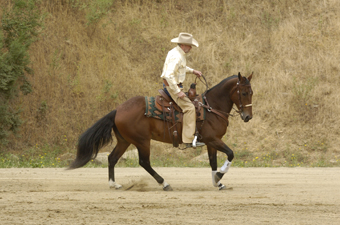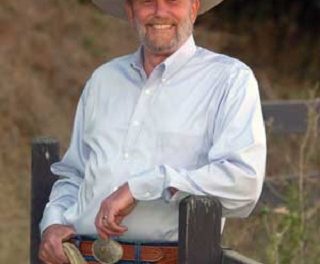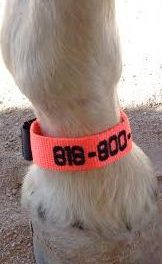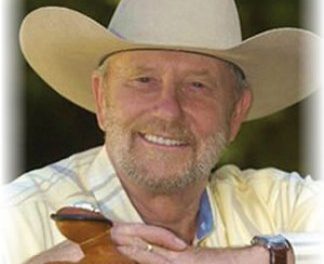 Working with horses is a mental game and requires that the trainer understand several principles and have a number of skills. The following “secrets” will help you communicate with your horse and build the great relationship you always wanted. Here are the ten secrets you need to know.
Working with horses is a mental game and requires that the trainer understand several principles and have a number of skills. The following “secrets” will help you communicate with your horse and build the great relationship you always wanted. Here are the ten secrets you need to know.
Follow through –
Follow through is extremely important. If you do not follow through every time you ask for something from your horse, your horse will never understand what you are asking. In other words, if I am teaching a horse to go forward in a round pen or on a lunge line and I ask the horse to go forward but it stands and looks at me, follow through is needed. In this situation, the follow through is to ask the horse to go forward with the least amount of pressure needed until the horse moves forward. If you ask and ask and ask and the horse continues to stand there and look at you, you have taught the horse to stand and look at you. Without follow through the horse does not understand what you are asking him to do.
Control the horse’s feet –
The second secret relates to control of the horse’s feet. This is a very important concept, just as important as follow through. You control the horse’s feet by controlling the mind and you control the mind by controlling the feet. This can be done both on the ground and in the saddle. When you control the horse’s feet, especially when teaching something for the first time, you are going to experience resistance. When I teach a horse to backup, this is controlling the feet in a specific direction. When I ask the horse to backup and he does not move, I must follow through in controlling the horse’s feet. Once the horse’s feet start moving and with some energy, I am controlling the horse’s mind and connecting with the horse.
Being consistent –
Being consistent is a critical principle. This is a big, negative “C” word that a lot of people don’t like. Consistency not only refers to training your horse a set number of times per week, be it two or five days each week, it also means to be consistent in how you are teaching your horse. For example, if you are leading your horse and the horse bumps into you the normal correction would be to move the shoulders over or stop and back the horse. Because you are having a bad day, you ignore the behavior. You may have been sorry you came to train that day but you felt it was your responsibility. That is good but you need to understand that it is also your responsibility to be consistent in how you train. If you ignore the behavior once most likely, since it is a mental game, you will let the horse do it again. Horses appreciate and love consistency. Consistency builds trust, which is critical in your relationship with your horse.
Have patience –
We always need to have patience with our horses and persevere with the training.
Many people tell me I have a lot of patience but I have to say I don’t have any more patience than you or anyone else. I have learned that I have to be patient and that it does no good to lose my patience. When I lose my patience I end up upsetting the horse that makes the situation worse. We digress from the lesson while we both regain our composure. So, be patient with your horse. If you are not patient and you do not persevere, you will not succeed. If I had to name one and only one reason why I have been a successful horse trainer, I would say it is because I am tenacious. I never give up and neither must you when you are working with your horse.
Understand the use of pressure –
You must truly understand the use of pressure, the different forms of pressure and how must pressure to use. For example, pressure can be a direct physical contact like a halter, lead line, spur or tapping the horse with a crop. Pressure can also be indirect like waving a hand in the air or swinging a rope. Your job is to understand the least form of pressure that you can apply to your horse that will get your horse to respond the way you want.
Many people don’t like the word pressure they think it is wrong and that it encourages the flight instinct. It is true that a horse with a high emotional level will attempt to break free of a halter and lead if too much pressure is applied. It is up to us to be aware of the emotional level of the horse before we apply pressure and be sure we are in a safe environment.
Pressure represents anything that is uncomfortable for the horse. All a horse cares about is what it takes to make the discomfort stop. Whatever the horse is doing when you release the pressure is what you have taught the horse to do. For example when you are working in a round pen, it is not about running the horse into the ground. It is not about activating the flight instinct of the horse so that all the he thinks about is going over the fence. We use just enough pressure to keep the feet moving until you ask the horse to do something different.
Once in Reno, Nevada I did a demonstration on working with mustangs. The horse I got had a very high emotional level. At fifty feet away from him he began racing around in the round pen. When I entered the round pen I tried to be the most quiet and soft presence I could be. I stood in the middle very relaxed and waited while the mustang ran and ran. Even my presence was pressure for that horse. Once the horse slowed down I asked it to change directions and the horse was able to comply. Understanding pressure is very important. Too much and we can send a horse over the fence, too little and the horse will not comply.
Release of pressure –
It is important to release the pressure appropriately. You must understand when to release the pressure you have applied because horses learn by when and what we release on. Timing is critical and it takes a certain amount of skill to release the pressure at the correct time. If you ask your horse to go forward and you are consistent with your go forward cue and you are patient but you release before your horse has taken a step, I guarantee that the next time, you will not get a forward movement from your cue. You must be alert to the response your horse gives and release immediately.
Pressure/release are very important principles and work together. They occur in our every day relationships between children and adults as well as horses. The language is different but the principle is the same.
Next time I will discuss four more important secrets to help you train and build a great relationship with your horse.



